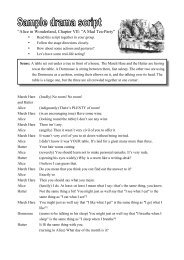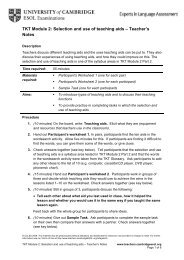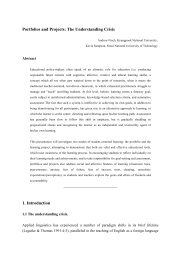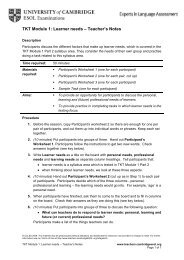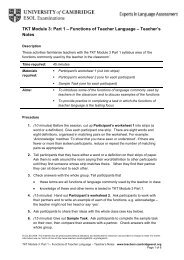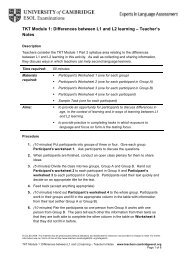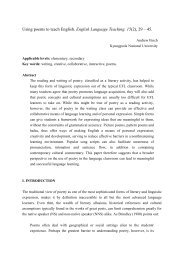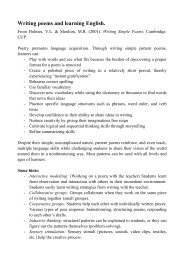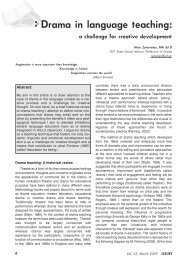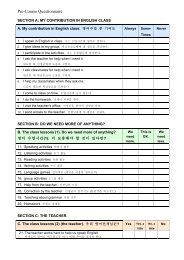here - Finchpark
here - Finchpark
here - Finchpark
You also want an ePaper? Increase the reach of your titles
YUMPU automatically turns print PDFs into web optimized ePapers that Google loves.
A number of studies have suggested that extensive contacts as well as opportunities to use thelanguage are necessary conditions for HL proficiency development. Also, a number of studiesdealing with older HL learners indicate that HL proficiency development is closely related tovarious socio-psychological factors such as attitude, motivation, orientation, identity, and vitalityperception. These studies have largely been based on indirect or self-reported data about languageuse, contact, attitude, motivation, and so forth. Future research should gather direct or in-depthobservation-based data as well (see He, 2001 and Park, this volume, for example) and analyze theprocesses w<strong>here</strong> specific contextual factors encourage younger and older HL learners to use HLs, orprevent them from doing so. At the same time, future curriculum development studies that examinehow best to incorporate all of these socio-psychological components into HL instruction and toencourage HL learners' extensive language use would be helpful (Lee & Kim, in press, alsoemphasize this point in their curriculum study focusing on university heritage students of Korean).Several correlational or regression analysis studies examined the relationship between the length ofattendance to community-based heritage school and proficiency levels. However, despite the centralrole of community-based HL schools in language maintenance, these studies consistently suggestthat these two factors are not related. The observed lack of correlation between the length ofattendance at HL schools and attained proficiency level may be partly explained by various instructionaland curriculum problems at these schools reported elsew<strong>here</strong> (e.g., low studentmotivation, lack of appropriate instructional materials and teacher training as reported in Kondo-Brown, in press). Since community-based HL school curricula differ considerably, it may not beappropriate to draw one single conclusion about their effectiveness. However, these findings at leastsuggest that some community-based HL schools may not be able to provide accountable instructionin terms of HL proficiency development. Without sizable changes in the support systems at thesocietal, community, and family levels, one may not expect much change in community-based HLschools, and they may remain ineffective as institutions for HL development. Discussion of thisissue should continue.A number of studies examined how parents with East Asian language backgrounds view andexperience their children's HL development. These studies suggest that parents of East Asianlanguage background support HL maintenance and that they see the importance of family supportfor this development. At the same, these parents have some concerns and problems in dealing withtheir children's HL education, such as difficulty with literacy development, resistance to use HLs atearly ages, and concern for the negative effect of HL maintenance on English acquisition. Also,these parents seem to consider the role of nonformal HL education differently: some understand thatits role in developing HL proficiency is limited, but others do not. Future studies should investigatehow teachers, school administers, and local experts work together to find ways to act on theseparents' concerns and needs.Even though the U.S. desperately needs speakers of languages other than English (Peyton,Ranard, & McGinnis, 2001), non-English languages have not received the support that they needand deserve (Fishman, 2001a). To slow down and even prevent the language shift process, we needto provide heritage learners with learning environments in which the values and ideas of heritageculture can be respected and practiced (cf. Au, 1980; Davis & Golden, 1994; Philips, 1983).Catering to a learning environment suitable for heritage learners is an important step that needs tobe taken to develop HLs and cultures and eventually to construct a true multilingual andmulticultural society.Bilingualism in linguistic minority children is a resource to be nurtured and promoted, not aproblem to be solved. Rather than looking at immigrant children as being deficient in English, weneed to consider children's native languages as an additional asset.



